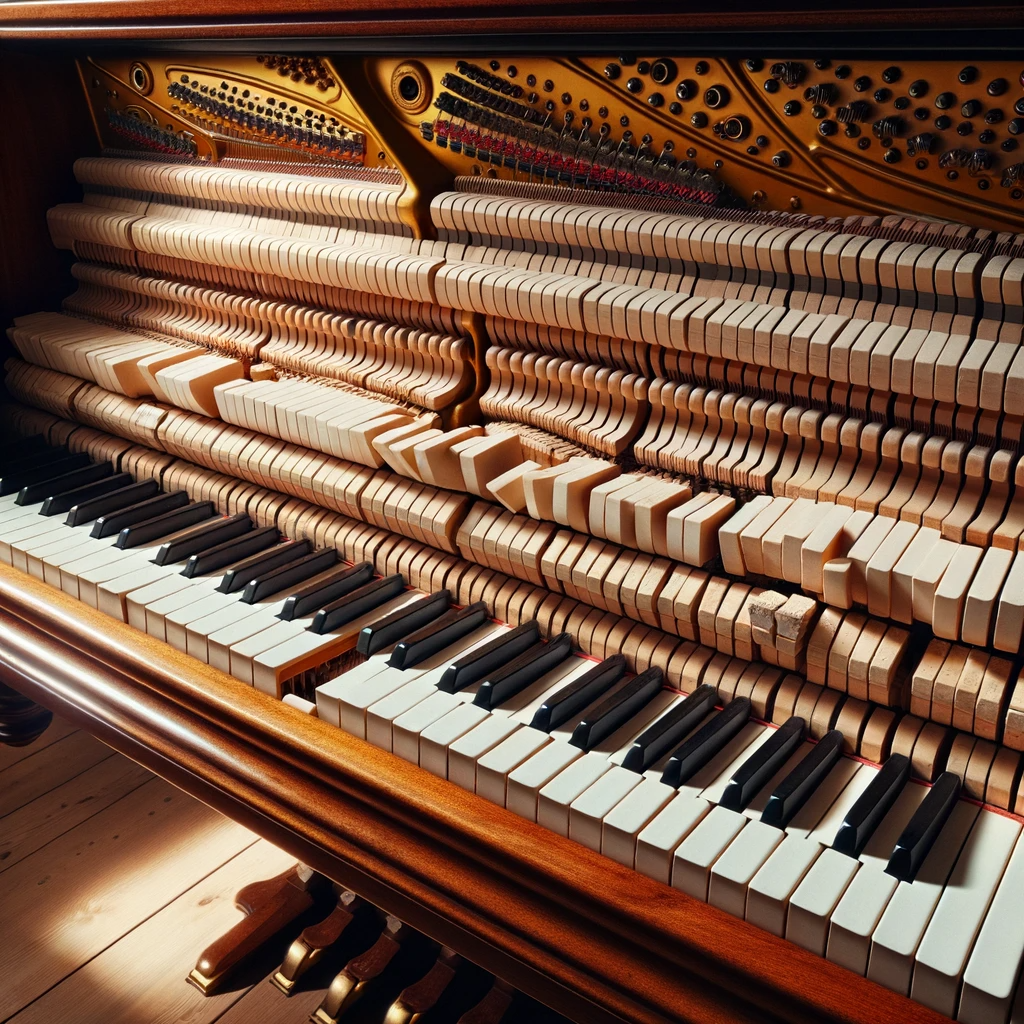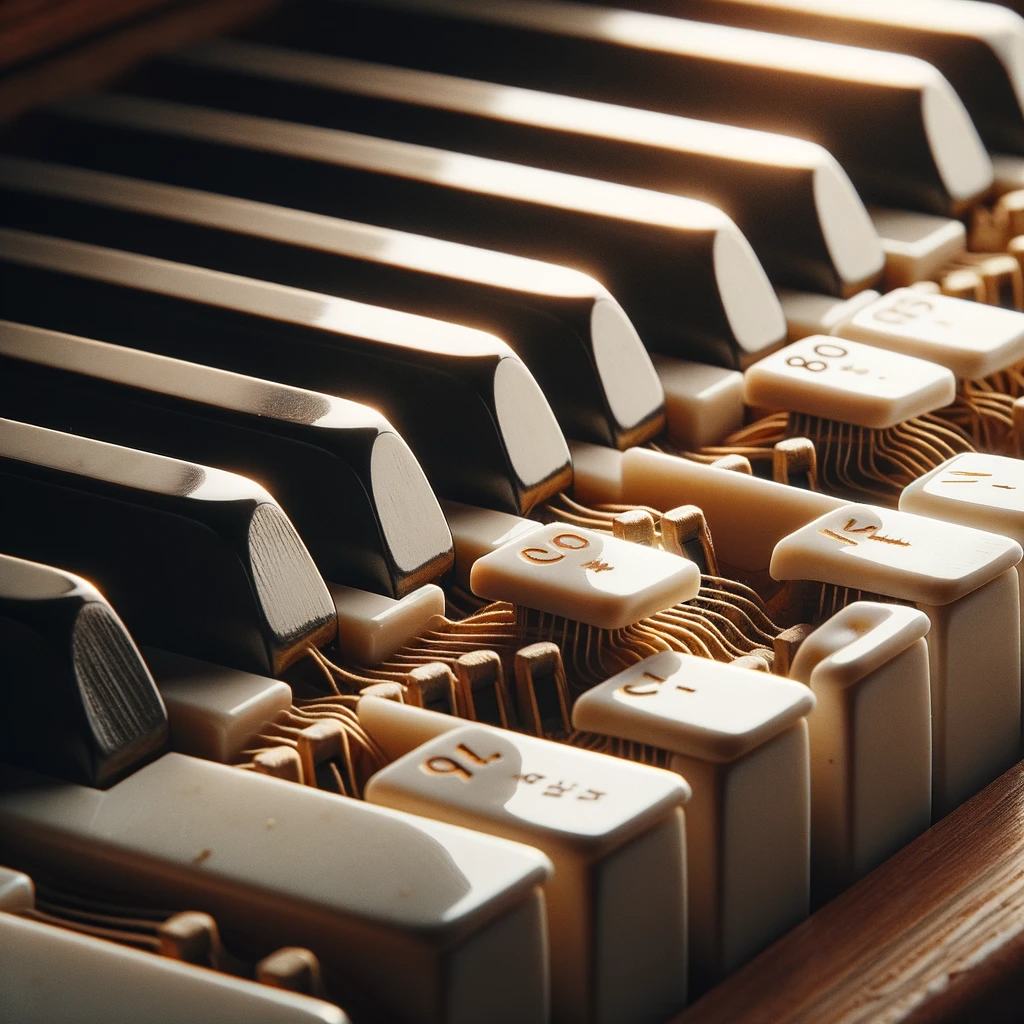Introduction

Piano – complex musical instrument. Smooth functioning piano keys – essential for optimal performance.
The Intricacies of the Piano
Piano – intricate and multifaceted musical instrument. Keys, strings, hammers, and pedals – fundamental components.
88 keys – combination of black and white, representing different notes. Strings – stretched across the soundboard, producing sound when struck by hammers.
Hammers – activated by pressing keys, striking the strings to create melodies. Pedals – used to enhance or modify the sound produced.
The Significance of Smooth Functioning Piano Keys

Key functionality crucial for pianists’ performance experience. Responsive and smoothly moving keys enable precise control over dynamics and expression. Well-maintained piano keys facilitate quick repetition of notes in rapid passages.
Inaccurate key movement affects timing and accuracy while playing complex pieces. Sticky or non-responsive keys disrupt fluidity and precision required in performances.
Unlocking Musical Potential
Optimal performance achieved through smooth functioning piano keys. Allows musicians to translate their musical ideas effortlessly. Enables nuanced articulation, expression, and phrasing.
Ensures accurate execution of intricate passages with ease. Playing with sticky keys impedes progress during practice sessions leading to frustration.
Realizing Artistic Vision
Pianists strive for artistic excellence; smooth key movement facilitates this goal. Expression captured through dynamic contrasts achievable with responsive keys. Fluidity in legato passages enhances melodic lines creating a captivating performance.
Precision achieved when playing complicated harmonies without sticking issues hindering progress. Note: This is section 1 / 5
Reason 1: Environmental Factors
Temperature and Humidity Fluctuations Affecting Wooden Components
Temperature and humidity fluctuations impact the wooden components of a piano, leading to sticky keys. When exposed to high humidity, the wood absorbs moisture causing it to expand. Conversely, in low humidity conditions, the wood releases moisture and contracts.
This expansion and contraction of the wood can cause piano keys to stick as they become misaligned or bind against each other. The constant change in environmental conditions puts stress on the delicate mechanisms within the piano.
Expansion and Contraction of Wood Causing Keys to Stick
The expansion and contraction of wood due to temperature and humidity fluctuations can directly affect the smooth movement of piano keys. As the wooden key frame expands or contracts, it may lead to misalignment or difficulty in sliding along keybed surfaces. The increased friction between these surfaces causes keys to stick when pressed or released.
Importance of Maintaining Stable Room Conditions for Piano Longevity
To ensure optimal performance and longevity of your piano, it is crucial to maintain stable room conditions. By controlling temperature and humidity levels within a suitable range, you can minimize the chances of keys sticking due to environmental factors.
Proper room insulation, use of humidifiers or dehumidifiers depending on external conditions, regular monitoring of temperature-humidity meters are all essential steps in creating a stable environment for your instrument. Taking proactive measures helps safeguard your piano from unnecessary wear caused by extreme fluctuations that may lead to sticky keys over time.
Reason 2: Dust and Dirt Accumulation
The Silent Culprits of Sticky Keys
Dust particles, invisible to the naked eye, have an uncanny ability to wreak havoc on your piano’s keys. These tiny but mighty particles can hinder the smooth movement of your keys, causing them to stick frustratingly. When you play the piano, the motion of the keys creates airflow that can attract and accumulate dust over time.
Dust Settling Between Surfaces
The accumulation of dust between key surfaces and the keybed is a recipe for sticky keys. As you strike a key, friction occurs between its surface and the keybed beneath it.
If dust settles in this area, it acts as a hindrance, impeding the flawless gliding motion required for effortless playing. The friction created by these minuscule particles can make your keys feel sluggish or even get stuck altogether.
Overcoming Dust Buildup: Cleaning Techniques
To prevent dust buildup and keep your piano keys in pristine condition, regular cleaning is essential. A soft cloth slightly dampened with water or a mild cleaning solution specifically designed for pianos can effectively remove accumulated dust from both sides of each key.
Gently wipe along the length of each key to eliminate any lingering dirt or debris. While cleaning, ensure that excess moisture is avoided as it could potentially cause damage to the wood or other components.
Remember that prevention is better than cure when it comes to dusty keys! Consider covering your piano when not in use to minimize exposure to airborne particles and maintain a cleaner playing surface.
Reason 3: Aging and Wear on Key Mechanisms
The Consequences of Time and Usage
Piano keys, like any mechanical component, undergo wear and tear as they age. Continuous usage over the years places significant strain on various key mechanisms. The regular pressing and releasing of keys during practice sessions or performances gradually take their toll on the intricate parts responsible for smooth key movement.
Impact on Key Responsiveness
Constant usage causes felts, bushings, and springs within the piano to wear out over time. As felts become worn, they lose their ability to cushion the keys properly.
This lack of adequate cushioning can result in keys sticking or failing to return to their original position after being pressed. Similarly, worn-out bushings no longer provide optimal support for the moving parts of the piano action mechanism.
Consequently, excessive friction may impede key movement or cause certain keys to stick intermittently. The deterioration of springs is another consequence of aging and heavy usage.
Springs lose their elasticity with time, leading to uneven tension across different keys’ mechanisms. This imbalance negatively affects the responsiveness of the piano keys and can contribute to sticking issues when playing.
It is essential for pianists to be aware that these natural effects occur due to long-term use of a piano. Understanding these consequences helps pianists make informed decisions about maintenance practices that can prolong the life of their instrument while ensuring optimal key responsiveness.
Reason 4: Improper Regulation or Adjustment
Proper regulation is crucial in preventing sticky keys. Inadequate alignment or spacing causes keys to bind together, hindering smooth movement. Pianos require regular maintenance by a professional technician to ensure proper regulation and adjustment.
Reason 5: Sticky Substance Contamination
An Unexpected Obstacle on Your Keys
In rare instances, foreign substances can find their way onto the piano keys. This includes spilled beverages, adhesive residue, or even tiny food particles.
These contaminants severely affect key movement by creating unwanted friction and stickiness. To address this issue, it is important to clean the keys thoroughly and remove any sticky substances using recommended solutions or tools as advised by a piano technician.
Conclusion: The Five Reasons Behind Sticky Piano Keys:

- Environmental factors such as temperature fluctuations and humidity affecting wooden components
- Dust and dirt accumulation between key surfaces causing friction
- Aging and wear on key mechanisms like felts, bushings, or springs
- Improper regulation resulting in inadequate alignment or spacing of the keys
- Sticky substance contamination due to spills, adhesive residue, or food particles
Pianists are encouraged to prioritize regular maintenance. Schedule professional assistance when needed to regulate and adjust your piano properly.
Implement thorough cleaning routines while being cautious about potential sticky substance contamination. By giving your instrument the care it deserves, you ensure it will continue delivering its harmonious magic for years to come.